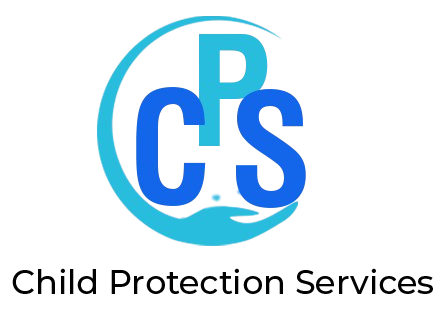Adoption and foster care are two deeply impactful paths that families in the United States can take to provide loving homes for children in need. This comprehensive guide is designed to offer U.S. families detailed insights into both processes, answering common questions, demystifying the procedures, and providing practical tips to navigate the journey.
Introduction: The Importance of Adoption and Foster Care in the U.S.
Every year, thousands of children in the United States enter the foster care system or become available for adoption. These children are often in need of stability, love, and a nurturing environment to thrive. Adoption and foster care offer families a chance to make a significant difference in a child’s life while also enriching their own lives. Understanding the complexities and nuances of these processes is crucial for prospective adoptive and foster parents. This guide will walk you through every step, from deciding to foster or adopt to finalizing the placement and beyond.
The Adoption Process in the United States
Understanding Adoption in the U.S.
Adoption is a legal process where a child becomes a permanent, legal member of a family different from their birth family. There are several types of adoption in the U.S., including domestic, international, and kinship adoption. Each type has its own set of legal requirements, timelines, and costs.
Domestic Adoption
Domestic adoption refers to adopting a child within the United States. It can be through private agencies, public foster care systems, or direct agreements with birth parents. The process typically involves background checks, home studies, legal proceedings, and, in some cases, open communication with the birth family.
Key Points:
- Private Agency Adoption: Involves working with an agency that matches you with a birth mother. This route may offer more control over the process, but it often comes with higher costs.
- Public Adoption: Managed through the state’s foster care system, this option is often more affordable and may provide financial assistance for the child’s care.
- Independent Adoption: Involves direct arrangements with the birth parents, often facilitated by an attorney. This method can be quicker but carries more legal complexities.
International Adoption
International adoption involves adopting a child from another country. This process is regulated by both U.S. and international laws, including the Hague Convention, which ensures ethical practices. International adoption often involves additional steps like obtaining visas and navigating foreign legal systems.
Key Points:
- Country Selection: Research countries with established international adoption programs. Each country has its own eligibility requirements and process.
- Costs: International adoption can be expensive, including travel, legal fees, and agency costs.
- Post-Adoption: Be prepared for additional steps like re-adoption in the U.S. and cultural integration support for the child.
Kinship Adoption
Kinship adoption occurs when a relative, often a grandparent or other close family member, adopts a child. This type of adoption helps maintain family ties and can be less disruptive for the child. However, it still requires legal proceedings to formalize the adoption.
Key Points:
- Legal Process: Even though the child is a relative, the adoption process still requires a home study and legal finalization.
- Emotional Considerations: Kinship adoption can bring unique emotional challenges, as the child may still have contact with their birth parents.
The Foster Care Process in the United States
What is Foster Care?
Foster care is a temporary arrangement where a child is placed with a state-certified family when their birth parents cannot provide adequate care. The goal of foster care is often reunification with the birth family, but in some cases, it leads to adoption if reunification is not possible.
Steps to Becoming a Foster Parent
Step 1: Understanding the Role of a Foster Parent
Foster parents provide a temporary home for children who cannot live with their birth families. They play a crucial role in supporting the child emotionally, physically, and academically. The primary goal is to offer a safe and nurturing environment until the child can return home or be placed in a permanent family.
Key Points:
- Temporary Care: Understand that foster care is often temporary, and the primary goal is reunification with the birth family.
- Flexibility and Patience: Foster parents must be flexible, patient, and prepared for unexpected changes.
Step 2: Meet the Basic Requirements
To become a foster parent in the U.S., you must meet specific requirements. These typically include being at least 21 years old, passing background checks, having a stable income, and completing a home study.
Key Points:
- Background Checks: This includes criminal history, child abuse registry checks, and fingerprinting.
- Home Study: A home study assesses your ability to provide a safe and nurturing environment for a child. It involves interviews, home inspections, and a review of your financial stability.
Step 3: Complete Training
Most states require prospective foster parents to complete pre-service training. This training covers topics such as child development, trauma-informed care, and the legal aspects of foster care.
Key Points:
- Pre-Service Training: Training is designed to prepare you for the challenges of foster parenting and help you understand the needs of children in foster care.
- Ongoing Training: Foster parents are often required to complete ongoing training to stay informed about best practices.
Step 4: Licensing and Placement
Once you’ve completed the requirements and training, you’ll be licensed as a foster parent. From there, you’ll work with a social worker to determine the best placement for your home.
Key Points:
- Placement Process: Social workers match children with foster families based on the child’s needs and the family’s ability to meet those needs.
- Support Services: Foster parents often receive support from social workers, therapists, and other professionals to help care for the child.
Challenges and Rewards of Adoption and Foster Care
Emotional Challenges
Both adoption and foster care come with emotional challenges, including dealing with attachment issues, grief, and loss. Children in these systems often have experienced trauma, and it’s essential for adoptive and foster parents to be prepared to provide emotional support.
Key Points:
- Attachment Issues: Children may struggle with forming bonds, especially if they’ve experienced multiple placements.
- Grief and Loss: Children may grieve the loss of their birth family, even if the placement is ultimately beneficial.
Legal and Financial Considerations
Adoption and foster care also involve significant legal and financial considerations. These include legal fees, potential adoption subsidies, and ongoing costs associated with raising a child.
Key Points:
- Legal Fees: Adoption can be expensive, with costs ranging from a few thousand to tens of thousands of dollars, depending on the type of adoption.
- Financial Assistance: Foster parents may receive a stipend to help cover the cost of caring for a child, and some adoptions may qualify for subsidies or tax credits.
The Rewards
Despite the challenges, adoption and foster care can be incredibly rewarding. Providing a stable, loving home for a child in need is a life-changing experience for both the child and the family. Many adoptive and foster parents describe the experience as one of the most fulfilling things they’ve ever done.
Key Points:
- Making a Difference: You’re offering a child a second chance at a stable and loving life.
- Building a Family: Whether temporary or permanent, the bonds formed through adoption and foster care can last a lifetime.
Post-Adoption and Post-Foster Care Support
Transitioning to Permanency
Once the adoption is finalized or the foster child is reunified with their birth family, the transition can be challenging. It’s essential to continue providing emotional support and stability during this period.
Key Points:
- Post-Adoption Services: Many agencies offer post-adoption services, including counseling, support groups, and educational resources.
- Post-Reunification Support: Foster families can help birth families navigate the reunification process by offering support and resources.
Long-Term Considerations
For adoptive families, long-term considerations include discussing the child’s adoption story, managing any ongoing contact with birth families, and addressing any future legal or emotional needs.
Key Points:
- Openness in Adoption: Many adoptions today are open, meaning the child maintains some level of contact with their birth family. It’s important to navigate these relationships carefully.
- Ongoing Support: Continue to seek out resources and support groups for adoptive families as your child grows.
Conclusion: The Impact of Adoption and Foster Care
Adoption and foster care are profound ways to change a child’s life and create a loving family. While the process can be complex and challenging, the rewards are immeasurable. By understanding the steps involved, preparing for the emotional and legal aspects, and seeking out support, U.S. families can successfully navigate the adoption and foster care journey and provide a stable, nurturing environment for children in need.
This guide aims to offer a comprehensive overview of adoption and foster care in the United States. By following these steps and seeking out additional resources, families can make informed decisions and embark on a fulfilling journey of love and care.


